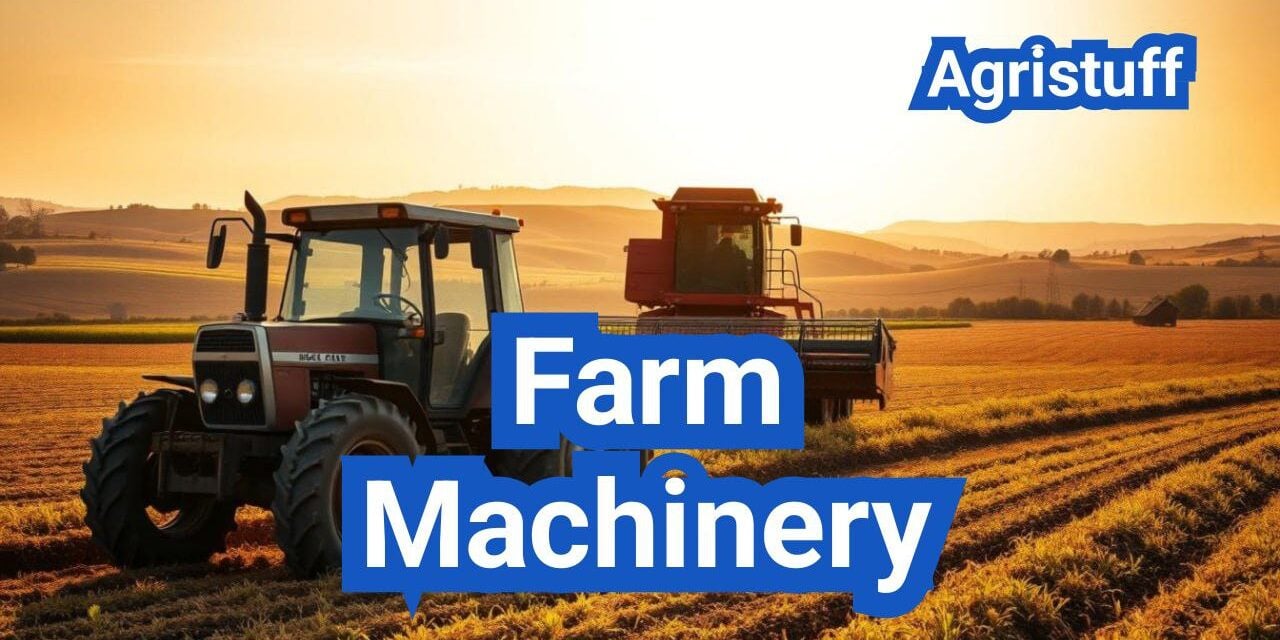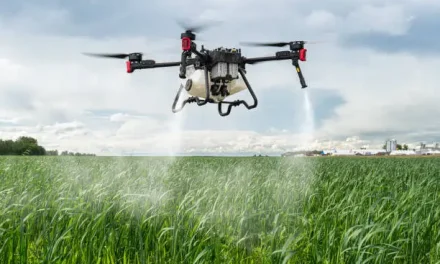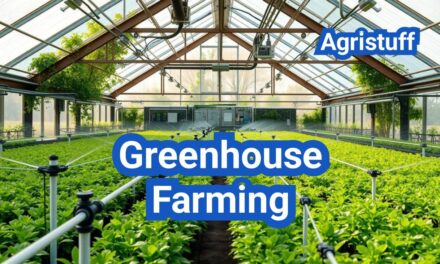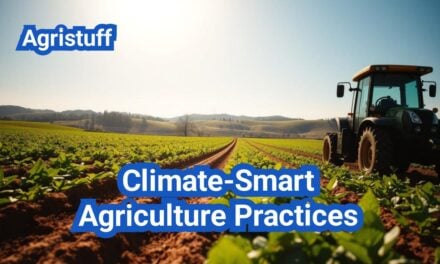The agricultural industry is undergoing a significant transformation with advancements in precision agriculture and autonomous equipment. Modern farm machinery plays a crucial role in enhancing productivity and efficiency.
To maximize return on investment (ROI), it’s essential to match equipment to the size of the acreage being managed. Selecting the right machinery involves considering several factors, including the type of crops, soil conditions, and the scale of operations.
By understanding the basics of farm machinery and equipment, farmers can make informed decisions that optimize their operations and improve profitability.
Key Takeaways
- Matching equipment to acreage is crucial for optimal ROI.
- Understanding farm machinery basics is essential for informed decision-making.
- Factors such as crop type, soil conditions, and operation scale influence equipment selection.
- Advancements in precision agriculture and autonomous equipment are transforming the industry.
- Proper equipment selection can significantly enhance productivity and efficiency.
The Role of Farm Machinery in Modern Agriculture
In modern agriculture, farm machinery is indispensable for optimizing crop yields and reducing labor costs. The United States, with its vast agricultural lands, has seen a significant transformation in farming practices thanks to advancements in farm machinery.
Evolution of Agricultural Equipment in the U.S.
The history of farm machinery in the U.S. is marked by continuous innovation, from the introduction of tractors to the current era of precision agriculture. Precision agriculture has revolutionized farming by enabling farmers to make data-driven decisions, thereby increasing efficiency and productivity.
The adoption of advanced technologies such as GPS guidance systems and auto-steering has improved the accuracy of farming operations. These technologies have not only reduced the workload on farmers but also minimized the environmental impact by optimizing the use of resources.
Impact of Proper Equipment Selection on Productivity
Selecting the right farm machinery is crucial for maximizing productivity. The choice of equipment depends on various factors including the size of the farm, type of crops, and soil conditions. Proper equipment selection can lead to significant improvements in crop yields and reductions in operational costs.
| Farm Size (Acres) | Recommended Tractor Horsepower | Typical Implements |
|---|---|---|
| Under 50 | 25-50 HP | Small tillers, seeders |
| 50-500 | 50-150 HP | Tractors with plows, cultivators |
| 500+ | 150+ HP | Large tractors, combines |
Current Trends in the American Farm Equipment Market
The American farm equipment market is witnessing a shift towards more sophisticated and technologically advanced machinery. Precision agriculture and autonomous tractors are becoming increasingly popular among farmers due to their potential to enhance efficiency and reduce labor costs.
The market is also seeing a rise in the adoption of data analytics and machine learning technologies to optimize farming operations. These technologies enable farmers to monitor their crops in real-time, predict yields, and make informed decisions.
Assessing Your Farm’s Equipment Needs

To maximize efficiency, farmers must carefully evaluate their equipment requirements based on various factors. Assessing your farm’s equipment needs is a critical step in optimizing agricultural productivity and ensuring the long-term viability of your operation.
Evaluating Acreage and Terrain Characteristics
The size of your farm and its terrain characteristics play a significant role in determining the type and scale of equipment you need. Larger acreage typically requires more substantial machinery, while smaller farms might benefit from compact or specialized equipment. Terrain characteristics, such as slope, soil type, and drainage, also influence equipment selection.
For instance, farms with hilly or uneven terrain may require equipment with four-wheel drive or specialized traction systems. In contrast, farms with flat, arable land might prioritize equipment with high capacity for tillage and planting.
Considering Crop Types and Rotation Schedules
The types of crops you grow and your rotation schedules significantly impact your equipment needs. Different crops require specific planting, maintenance, and harvesting equipment. For example, corn and soybean farms often use large planters and combines, while vegetable farms might require more specialized equipment for planting and harvesting various crops.
“The choice of equipment is closely tied to the cropping system and the farm’s overall strategy for managing soil health and pest pressure.” –
John Smith, Agricultural Expert
Crop rotation schedules also affect equipment utilization. Farms with complex rotations may need a variety of equipment to manage different crops effectively.
Analyzing Labor Availability and Skill Levels
Labor availability and the skill levels of your workforce are crucial factors in determining your equipment needs. Farms with limited labor may need to invest in more automated or efficient equipment to compensate for the lack of manual labor.
| Labor Availability | Equipment Needs |
|---|---|
| High | Manual or semi-automated equipment |
| Low | Highly automated or precision equipment |
Additionally, the skill level of your labor force influences the type of equipment you can effectively operate and maintain. Investing in operator training or hiring experienced personnel can be as important as selecting the right equipment.
By carefully evaluating these factors, farmers can make informed decisions about their equipment needs, ultimately improving productivity and reducing costs. Considering farm machinery finance options and understanding farm machinery costs are also essential steps in this process.
Essential Types of Farm Machinery for Different Operations
Farm machinery plays a crucial role in various agricultural operations, from soil preparation to harvesting. The right equipment can significantly enhance productivity and efficiency on the farm.
Soil Preparation Equipment
Soil preparation is a critical step in farming, and various types of machinery are used for this purpose. Plows are used to turn over the soil, breaking it up and aerating it. There are different types of plows, including moldboard plows and chisel plows, each serving specific soil conditions. Disk harrows further break down the soil, while cultivators are used to loosen and aerate the soil, often before planting.
As noted by agricultural expert, “The quality of soil preparation directly impacts crop yields and farm profitability.” (
“Soil preparation is the foundation of successful farming. It’s where the season’s success is often determined.”
).
Planting and Seeding Machinery
Once the soil is prepared, the next step is planting. Planters are designed to sow seeds at the correct depth and spacing, ensuring optimal growing conditions. Modern planters often come equipped with advanced technology, such as GPS guidance, to improve accuracy. Seed drills are another type of planting equipment that sow seeds in rows, often used for crops like wheat and barley.
- Precision planters for row crops
- Seed drills for small grains
- Broadcast seeders for cover crops
Crop Maintenance Equipment
After planting, crop maintenance is crucial for healthy growth. Cultivators are used to control weeds and aerate the soil around growing crops. Sprayers apply fertilizers, herbicides, and pesticides to protect and nourish crops. Modern sprayers often feature boomless nozzles or precision application technology to minimize waste and environmental impact.
| Equipment Type | Function | Common Crops |
|---|---|---|
| Cultivators | Weed control and soil aeration | Row crops like corn and soybeans |
| Sprayers | Application of chemicals | Various crops including fruits and vegetables |
Harvesting Equipment
Harvesting is the final stage of crop production, and various machines are used depending on the crop type. Combines are versatile machines that both harvest and thresh grains like wheat, corn, and soybeans. Forage harvesters are used for crops like corn silage and haylage, chopping the crop into small pieces for animal feed.
As farming technology advances, equipment manufacturers continue to innovate, improving the efficiency and effectiveness of harvesting operations.
Tractors: Selecting the Right Horsepower and Size
Tractors are the backbone of most farming operations, and selecting one with the correct horsepower and size is essential for maximizing productivity. The right tractor can make a significant difference in the efficiency and profitability of farming activities.
Understanding Tractor Horsepower Requirements by Acreage
The horsepower required for a tractor largely depends on the acreage of the farm and the type of operations to be performed. Generally, smaller farms (under 50 acres) may require tractors with lower horsepower (around 25-50 HP), while larger farms (500+ acres) need more powerful tractors (often exceeding 200 HP).
Tractor Horsepower Guidelines by Acreage:
- Under 50 acres: 25-50 HP
- 50-200 acres: 50-100 HP
- 200-500 acres: 100-200 HP
- 500+ acres: 200+ HP
Utility vs. Row Crop vs. Specialty Tractors
There are various types of tractors designed for different farming needs. Utility tractors are versatile and suitable for a wide range of tasks, from loader work to PTO-driven implements. Row crop tractors are designed for high-clearance applications, ideal for row crop farming. Specialty tractors are tailored for specific tasks or crops, such as orchard or vineyard operations.
Draft Load Considerations for Implements
The draft load of implements attached to the tractor is a critical factor in determining the required tractor horsepower. Implements with higher draft requirements, such as plows and tillers, necessitate more powerful tractors. Farmers should consider the types of implements they will be using and their draft loads when selecting a tractor.
Popular Tractor Brands and Models in the U.S. Market
Several tractor brands are prominent in the U.S. market, offering a range of models to suit different farming needs. Brands like John Deere, Case IH, and New Holland are well-known for their quality and performance. When choosing a tractor, farmers should consider factors such as reliability, fuel efficiency, and the availability of service and parts.
By carefully considering these factors, farmers can select a tractor that meets their specific needs, enhancing their operational efficiency and productivity.
Matching Farm Machinery to Your Acreage

Optimizing farm machinery to match your acreage is crucial for maximizing efficiency and ROI. Farmers need to carefully assess their equipment needs based on the size and characteristics of their land to ensure they are using the right tools for the job.
Equipment Sizing for Small Farms (Under 50 Acres)
For small farms under 50 acres, equipment sizing is critical to avoid overspending on machinery that is too large for the operation. Compact tractors and specialized equipment for niche crops can be ideal for these smaller operations. Farmers should consider versatile machinery that can handle multiple tasks to maximize efficiency.
Mid-Size Farm Equipment Solutions (50-500 Acres)
Mid-size farms, ranging from 50 to 500 acres, require a balance between equipment size and operational needs. Utility tractors with appropriate horsepower and implements designed for row crop management are typically suitable. Farmers in this category should focus on equipment reliability and the ability to perform timely operations.
Large-Scale Operation Machinery (500+ Acres)
For large-scale operations exceeding 500 acres, the focus shifts to high-capacity machinery that can handle extensive acreage efficiently. High-horsepower tractors and large implements are necessary to manage the workload. These farmers should prioritize equipment durability and advanced technology features that enhance productivity.
Scaling Equipment as Your Farm Grows
As farms expand, it’s essential to reassess equipment needs to ensure they align with the growing acreage. Gradual upgrades to larger or more specialized machinery may be necessary. Farmers should consider the long-term ROI of new equipment and how it will impact their overall farming operation.
Understanding Farm Machinery Field Capacity and Efficiency
To achieve optimal agricultural productivity, farmers must understand and optimize their machinery’s field capacity and efficiency. Field capacity refers to the amount of land that a machine can effectively cover in a given time, usually measured in acres per hour.
Calculating Theoretical vs. Effective Field Capacity
Theoretical field capacity is the maximum capacity of a machine under ideal conditions, calculated using the machine’s operating width and speed. However, actual performance is often lower due to factors like turning, overlapping, and downtime. Effective field capacity accounts for these inefficiencies, providing a more realistic measure of a machine’s productivity.
For example, a planter with a 30-foot operating width traveling at 5 miles per hour has a theoretical field capacity of 18.18 acres per hour. However, its effective field capacity might be 15 acres per hour after accounting for turns and other inefficiencies.
Factors Affecting Machine Efficiency
Several factors can impact machine efficiency, including:
- Operator skill level
- Terrain characteristics
- Equipment maintenance
- Weather conditions
Understanding these factors is crucial for optimizing machine performance. For instance, a well-maintained tractor will generally operate more efficiently than one that is not regularly serviced.
Optimizing Equipment Size for Timely Operations
Selecting the right equipment size is critical for ensuring timely operations. Too small, and the equipment may not complete tasks on time; too large, and it may be underutilized and more expensive than necessary.
| Farm Size (acres) | Recommended Tractor HP | Typical Implements |
|---|---|---|
| Under 50 | 25-50 HP | Small rotary tillers, seeders |
| 50-500 | 50-150 HP | 3-point hitch implements, row crop planters |
| 500+ | 150-300+ HP | Large planters, combines, grain carts |
By understanding field capacity and efficiency, farmers can make informed decisions about equipment purchases, optimize their operations, and ultimately improve their bottom line.
Farm Machinery Costs and Financial Planning
Farm machinery costs can significantly impact a farm’s profitability, making financial planning essential. Farmers must consider various expenses associated with farm equipment to ensure they make informed decisions that align with their operational goals.
Initial Purchase Costs vs. Lifetime Value
The initial purchase cost of farm machinery is often the most significant upfront expense. However, it’s crucial to evaluate this cost in the context of the equipment’s lifetime value. Factors such as durability, performance, and resale value play a significant role in determining the overall cost-effectiveness of the machinery.
Key considerations when assessing initial purchase costs versus lifetime value include:
- The total cost of ownership over the equipment’s lifespan
- Potential savings from purchasing used or refurbished equipment
- The impact of financing options on overall costs
Operating Costs and Fuel Efficiency
Operating costs, including fuel, lubricants, and other consumables, can significantly affect the overall expense of owning and operating farm machinery. Fuel efficiency is a critical factor in reducing these costs. Modern farm equipment often incorporates technologies that improve fuel efficiency, such as advanced engine designs and precision agriculture tools.
Farmers should consider the following strategies to minimize operating costs:
- Regular maintenance to ensure optimal engine performance
- Investing in fuel-efficient machinery
- Implementing precision agriculture techniques to reduce unnecessary fuel consumption
Maintenance and Repair Expense Projections
Maintenance and repair costs are inevitable for farm machinery. Developing a maintenance schedule and budgeting for repairs can help farmers manage these expenses more effectively. The cost of replacement parts, labor, and potential downtime should be factored into these projections.
Best practices for managing maintenance and repair expenses include:
- Regular inspections to identify potential issues early
- Keeping detailed records of maintenance and repairs
- Budgeting for annual maintenance costs as a percentage of the equipment’s purchase price
Custom Rate Considerations
For farmers who may not need to own certain types of machinery, custom hiring can be a cost-effective alternative. Understanding custom rates and the services they cover is essential for financial planning. Factors influencing custom rates include the type of service, equipment used, and local market conditions.
When evaluating custom hiring options, farmers should consider:
- The cost per acre or hour for specific services
- The availability and reliability of custom operators
- The potential for long-term contracts or agreements
Calculating Farm Machinery ROI

Understanding the return on investment (ROI) for farm machinery is crucial for farmers to make informed decisions about their equipment purchases. Calculating ROI helps farmers evaluate the financial performance of their machinery investments and make data-driven decisions for future acquisitions.
Determining Break-Even Points by Acreage
The break-even point is a critical factor in ROI calculation, representing the point at which the machinery’s costs equal its benefits. To determine the break-even point, farmers need to consider both fixed and variable costs associated with the machinery, as well as the acreage it will be used on.
For example, a farmer purchasing a new tractor must consider the initial purchase price, depreciation, insurance, and maintenance costs, as well as fuel and repair expenses. By dividing the total fixed costs by the contribution margin per acre (revenue per acre minus variable costs per acre), farmers can determine the break-even point in terms of acreage.
| Machinery | Fixed Costs | Variable Costs per Acre | Revenue per Acre | Break-Even Point (Acres) |
|---|---|---|---|---|
| Tractor | $10,000 | $20 | $100 | 125 |
| Planter | $5,000 | $15 | $100 | 59 |
Measuring Productivity Gains
Productivity gains are a significant component of ROI for farm machinery. New or upgraded equipment can lead to increased efficiency, reduced labor costs, and improved crop yields. To measure productivity gains, farmers should track key performance indicators (KPIs) such as acres worked per hour, fuel consumption per acre, and crop yield per acre.
Example of Productivity Gains: A farmer who upgrades to a more efficient planter may see a reduction in planting time by 20%, allowing for more timely planting and potentially higher yields.
Long-Term Value Assessment Methods
Assessing the long-term value of farm machinery involves considering its residual value, maintenance costs over time, and potential for technological obsolescence. Farmers can use methods like net present value (NPV) analysis to evaluate the long-term financial impact of their machinery investments.
When to Upgrade vs. Maintain Existing Equipment
Deciding whether to upgrade or maintain existing equipment depends on several factors, including the equipment’s age, condition, and performance. Farmers should weigh the costs of repairs and maintenance against the potential benefits of new equipment, such as improved efficiency and productivity.
By carefully calculating ROI and considering factors like break-even points, productivity gains, and long-term value, farmers can make informed decisions about their farm machinery investments, ultimately improving the profitability and sustainability of their operations.
Depreciation and Tax Considerations for Farm Equipment

The purchase of farm equipment involves not only the initial cost but also complex depreciation and tax considerations. Farmers must understand these factors to make informed decisions about their equipment investments.
MACRS Depreciation Methods for Agricultural Machinery
The Modified Accelerated Cost Recovery System (MACRS) is a depreciation method that allows farmers to recover the cost of their equipment over time. MACRS provides a larger depreciation deduction in the early years, which can be beneficial for farm businesses with fluctuating incomes.
Under MACRS, farm equipment is typically classified as 7-year property, although certain items like irrigation systems or grain storage facilities may have longer recovery periods. Farmers should consult IRS guidelines or a tax professional to ensure accurate classification and depreciation calculation.
Section 179 Deductions and Bonus Depreciation
Section 179 of the IRS tax code allows farmers to deduct the full purchase price of qualifying equipment in the year of purchase, rather than depreciating it over time. This can provide significant tax savings, especially for smaller equipment purchases.
Bonus depreciation is another tax incentive that allows farmers to deduct a percentage of the equipment cost in the first year. This can be particularly beneficial for larger equipment purchases or when combined with Section 179 deductions.
Tax Planning Strategies for Equipment Purchases
Effective tax planning is crucial when purchasing farm equipment. Farmers should consider their current and projected income levels, as well as any changes in tax laws, when deciding whether to purchase equipment outright or use financing options.
- Consider purchasing equipment in years when income is higher to maximize depreciation benefits.
- Keep accurate records of equipment purchases and maintenance to support tax deductions.
- Consult with a tax professional to optimize equipment purchase timing and financing methods.
Record Keeping for Tax Compliance
Maintaining accurate records is essential for complying with tax regulations related to farm equipment depreciation. Farmers should keep detailed records of equipment purchases, including invoices, serial numbers, and dates of purchase.
Additionally, records of equipment maintenance, repairs, and any improvements should be kept to distinguish between deductible expenses and capital improvements that may need to be depreciated separately.
Alternative Acquisition Options: Beyond Purchasing

Beyond the traditional route of purchasing, there are alternative methods for obtaining farm equipment that can significantly impact a farm’s financial and operational efficiency.
Equipment Leasing Advantages and Disadvantages
Equipment leasing is a popular alternative to purchasing farm machinery. The primary advantage of leasing is that it allows farmers to use equipment without the significant upfront capital outlay. Leasing can also provide tax benefits, as lease payments can be deductible as operating expenses. However, leasing may have its drawbacks, such as the potential for higher long-term costs and limitations on equipment modification or usage.
Key considerations for equipment leasing include:
- Lease duration and flexibility
- Maintenance and repair responsibilities
- Options for purchasing the equipment at the end of the lease
Custom Hiring and Contract Work Economics
Custom hiring involves contracting with another party to perform specific farming operations, such as planting or harvesting. This approach can be economically beneficial, especially for farmers who may not have the necessary equipment or labor during peak periods. The economics of custom hiring depend on factors such as the cost per acre, the timeliness of operations, and the quality of work performed.
Benefits of custom hiring include:
- Reduced capital investment in equipment
- Increased operational flexibility
- Access to specialized equipment and expertise
Joint Ownership and Equipment Sharing Models
Joint ownership and equipment sharing models are collaborative approaches to acquiring and utilizing farm machinery. These models allow multiple farmers to share the costs and benefits of equipment ownership, potentially reducing individual financial burdens and improving equipment utilization rates.
Advantages of joint ownership include:
- Lower individual costs
- Increased access to a wider range of equipment
- Potential for more efficient equipment use
Used vs. New Equipment Considerations
When acquiring farm equipment, farmers must decide between new and used machinery. New equipment offers the latest technology, warranties, and potentially lower maintenance costs in the short term. Used equipment, on the other hand, can provide significant cost savings upfront, although it may come with higher maintenance costs and older technology.
Key factors to consider when evaluating used vs. new equipment include:
- Initial purchase price
- Expected maintenance and repair costs
- Technological advancements and compatibility with existing equipment
Precision Agriculture and Technology Integration

The integration of precision agriculture technologies is revolutionizing farm machinery efficiency. By leveraging advanced tools and data-driven insights, farmers can optimize their equipment usage, reduce waste, and improve overall productivity.
GPS Guidance Systems and Auto-Steering Benefits
GPS guidance systems and auto-steering technology are significantly enhancing the accuracy and efficiency of farm operations. These systems enable tractors and other equipment to navigate fields with precision, reducing overlap and minimizing soil compaction.
The benefits of GPS guidance include increased productivity, as operators can work longer hours without fatigue, and improved accuracy, which leads to more efficient use of inputs like seeds and fertilizers.
Section Control Technology and Input Savings
Section control technology allows for the precise application of inputs such as seeds, fertilizers, and pesticides. By automatically turning off sections of the equipment when passing over previously treated areas, farmers can avoid overlap and reduce waste.
This technology not only saves on input costs but also minimizes environmental impact by reducing the amount of chemicals applied to the field.
Yield Monitoring and Variable Rate Applications
Yield monitoring systems collect data on crop yields across different parts of the field, providing valuable insights for future planting and input application decisions. This information can be used to create variable rate application maps, optimizing input usage based on the specific needs of different areas within the field.
By adopting yield monitoring and variable rate applications, farmers can maximize their crop yields while reducing waste and environmental impact.
Data Management for Equipment Optimization
Effective data management is crucial for optimizing farm equipment performance. By collecting and analyzing data from various sources, including GPS guidance systems and yield monitors, farmers can gain insights into their operations and make informed decisions.
Data management platforms can help farmers streamline their operations, improve equipment efficiency, and reduce costs by identifying areas for improvement.
Maintenance Best Practices for Maximizing Equipment Lifespan

To maximize the lifespan of farm machinery, adopting a rigorous maintenance routine is essential. Regular maintenance not only ensures that equipment operates at peak efficiency but also significantly reduces the likelihood of unexpected breakdowns, thereby saving time and repair costs.
Preventative Maintenance Schedules by Equipment Type
Different types of farm machinery require tailored maintenance schedules. For instance, tractors need regular oil changes and filter replacements, while planting equipment requires checks on seed meters and row markers. Establishing a preventative maintenance schedule based on the manufacturer’s recommendations and the specific demands of each equipment type is crucial.
- Daily checks: Inspect for visible wear, oil leaks, and tire pressure.
- Weekly maintenance: Perform lubrication tasks and check hydraulic fluid levels.
- Seasonal maintenance: Conduct thorough inspections, replace worn parts, and prepare equipment for storage.
Off-Season Storage and Protection
Proper storage during the off-season is vital for protecting farm machinery from deterioration. Equipment should be cleaned thoroughly to remove dirt and debris, which can cause corrosion. Applying a rust inhibitor and storing machinery in a dry, covered area can significantly extend its lifespan.
Key storage practices include:
- Cleaning equipment before storage.
- Applying protective coatings to vulnerable parts.
- Storing equipment in a dry, secure location.
Record Keeping for Equipment Service
Maintaining detailed records of all maintenance activities is essential for tracking the history of each piece of equipment. This includes documenting repairs, replacements, and regular maintenance tasks. Accurate record-keeping helps in planning future maintenance and can be invaluable when diagnosing issues.
Extending Equipment Life Through Proper Care
Beyond regular maintenance, proper care and operation of farm machinery play a significant role in extending its lifespan. This includes training operators to use equipment correctly, avoiding overloading, and ensuring that machinery is appropriately matched to the task at hand.
By implementing these maintenance best practices, farmers can significantly extend the life of their equipment, improve operational efficiency, and reduce overall costs.
Safety and Compliance Requirements for Farm Machinery

Farm machinery safety and regulatory compliance are critical aspects of modern agriculture. Ensuring that farm equipment is operated safely and in accordance with regulations is not only a legal requirement but also crucial for the well-being of farmers, farm workers, and the general public.
Operator Training and Certification
Proper operator training is essential for the safe operation of farm machinery. Many agricultural organizations and equipment manufacturers offer training programs that cover the safe operation of various types of farm equipment. These programs often include both theoretical and practical components, ensuring that operators understand not only how to operate the machinery but also how to perform basic maintenance and safety checks.
Transport Rules and Road Regulations
When transporting farm machinery on public roads, farmers must comply with specific regulations. These can include requirements for lighting, signage, and escort vehicles for oversized equipment. Understanding and adhering to these transport rules is crucial for ensuring the safety of both the machinery operators and other road users.
Tier 4 Emissions Standards Compliance
The U.S. Environmental Protection Agency (EPA) has implemented Tier 4 emissions standards for diesel engines used in farm machinery. These standards aim to reduce emissions of particulate matter and nitrogen oxides. Farm machinery owners must ensure their equipment complies with these standards, which may involve upgrading older machines or purchasing new equipment that meets the current emissions requirements.
| Emissions Standard | Description | Implementation Year |
|---|---|---|
| Tier 1 | Initial emissions standards for diesel engines | 1996 |
| Tier 2 | Stricter emissions standards | 2001 |
| Tier 3 | Further reduction in emissions | 2006 |
| Tier 4 | Significant reduction in particulate matter and nitrogen oxides | 2014 |
Insurance Considerations for Farm Equipment
Adequate insurance coverage is a critical aspect of managing risk for farm machinery. Farmers should consider insurance policies that cover not only damage to the equipment itself but also liability for accidents involving the machinery. Understanding the terms and conditions of insurance policies, including deductibles and coverage limits, is essential for making informed decisions.
Developing a Strategic Farm Machinery Plan
Developing a strategic farm machinery plan is essential for optimizing ROI and efficiency. By assessing your farm’s equipment needs, understanding the role of different machinery types, and considering factors like acreage, terrain, and labor availability, you can create a tailored plan that enhances productivity.
A well-structured farm machinery plan involves selecting the right equipment for your operations, whether it’s tractors, planting and seeding machinery, or harvesting equipment. It’s crucial to match farm machinery to your acreage, considering the size and type of equipment that will yield the best ROI.
Strategic planning also includes understanding farm machinery costs, calculating ROI, and exploring alternative acquisition options like leasing or custom hiring. By integrating precision agriculture technologies and maintaining equipment properly, you can further optimize your operations.
Ultimately, a strategic farm machinery plan helps you make informed decisions about equipment purchases, maintenance, and upgrades, ensuring that your farm remains competitive and profitable. By focusing on ROI and efficiency, you can develop a plan that supports your farm’s long-term success.
FAQ
What are the key factors to consider when selecting farm machinery for my operation?
When selecting farm machinery, consider factors such as acreage, terrain, crop types, labor availability, and the specific tasks the equipment will perform. Understanding these elements will help you choose the right equipment for optimal productivity and return on investment.
How has farm machinery evolved over time, and what impact has it had on productivity?
Farm machinery has evolved significantly, from manual labor to mechanized equipment and now to precision agriculture technologies. This evolution has greatly increased productivity by enabling farmers to cultivate and harvest larger areas more efficiently, reduce labor costs, and improve crop yields.
What are the different types of tractors available, and how do I choose the right one for my farm?
Tractors come in various types, including utility, row crop, and specialty tractors. The choice depends on factors such as the size of your operation, the type of crops you’re growing, and the specific tasks you need the tractor to perform. Consider horsepower requirements, draft load considerations, and the implements you’ll be using.
How do I determine the appropriate size of farm machinery for my acreage?
To determine the appropriate size of farm machinery, consider the size of your operation, the type of crops you’re growing, and the tasks you need to perform. For small farms (under 50 acres), smaller equipment may suffice, while larger operations (500+ acres) may require more substantial machinery. Mid-size farms (50-500 acres) fall somewhere in between.
What is field capacity, and how do I calculate it for my farm equipment?
Field capacity refers to the rate at which farm equipment can perform a task, typically measured in acres per hour. To calculate field capacity, consider factors such as the equipment’s operating speed, width, and efficiency. Theoretical field capacity is the maximum rate, while effective field capacity accounts for factors like turning time and operator skill.
How do I calculate the return on investment (ROI) for farm machinery?
To calculate ROI, consider the initial purchase cost, operating costs, and the value of the work performed by the equipment. Determine the break-even point by dividing the total cost by the number of acres or hours the equipment is used. Measure productivity gains by comparing yields or efficiency before and after acquiring the equipment.
What are the tax implications of purchasing farm machinery, and how can I maximize deductions?
Farm machinery purchases can be depreciated using the Modified Accelerated Cost Recovery System (MACRS). You may also be eligible for Section 179 deductions and bonus depreciation. Keep accurate records of equipment purchases, maintenance, and usage to ensure compliance and maximize tax benefits.
What are the benefits and drawbacks of leasing farm equipment instead of purchasing?
Leasing farm equipment can provide benefits such as lower upfront costs, access to newer technology, and reduced maintenance responsibilities. However, it may also result in higher long-term costs and limited control over the equipment. Weigh these factors against the needs of your operation to decide whether leasing is a suitable option.
How can I integrate precision agriculture technologies with my existing farm machinery?
Precision agriculture technologies, such as GPS guidance and yield monitoring, can be integrated with farm machinery to improve efficiency and productivity. Consider retrofitting existing equipment with precision ag technology or investing in new machinery with these features built-in. Data management is crucial to optimizing equipment performance and making informed decisions.
What maintenance best practices can help extend the lifespan of my farm equipment?
Regular maintenance is essential to extending equipment lifespan. Implement a preventative maintenance schedule, perform routine checks, and address issues promptly. Proper storage and protection during the off-season can also help prevent damage and deterioration.
What safety and compliance requirements should I be aware of when operating farm machinery?
Operator training and certification are crucial for safe equipment operation. Familiarize yourself with transport rules, road regulations, and emissions standards. Ensure compliance with Tier 4 emissions standards and consider insurance options to protect your investment.
Conclusion of: Farm Machinery
Why farm machinery decisions start with acres, time windows, and ROI
Farm machinery choices determine how fast you can work, how much you spend per acre, and how reliably you hit planting and harvest windows; the best approach is to size farm machinery to your actual acreage, weather-limited field days, and a disciplined return-on-investment (ROI) calculation that balances ownership and operating costs against timeliness and yield. For U.S. context on farm sizes and structure that shape farm machinery needs, review recent national statistics to ground your plan. USDA NASS 2022 Census Highlights
What “farm machinery” includes—and how it ties to cost per acre
Farm machinery spans tractors, combines, tillage tools, planters, drills, sprayers, grain handling, hay equipment, and precision add-ons like guidance and section control; each component in farm machinery influences fixed costs (depreciation, interest, insurance, housing) and variable costs (fuel, labor, maintenance), and the total must be converted to $/acre for clean comparisons across own vs. hire decisions. Use standard university frameworks to avoid apples-to-oranges estimates when evaluating farm machinery. ISU Ag Decision Maker: Estimating Farm Machinery Costs (A3-29)
Step 1 — Map your workable days to capacity targets for farm machinery
Before buying farm machinery, list realistic “good field days” for spring and fall; your workable days—combined with acres and daily operating hours—set minimum capacity for planters, sprayers, and harvesters. Because fewer suitable days raise risk, right-sizing farm machinery to your window protects yield and reduces stress. Historical “days suitable for fieldwork” data give a sensible planning baseline to size farm machinery with real weather constraints in mind. ISU: Days Suitable for Fieldwork (A3-25)
Step 2 — Use the field-capacity formula to size farm machinery width and speed
Effective field capacity (ac/hr) for farm machinery is commonly approximated as (width ft × speed mph × field efficiency %) ÷ 8.25; with realistic field efficiency, this formula links implement width and travel speed to acres per hour. Tables and worked examples help you translate specs into day-by-day output so farm machinery sizing stops being guesswork and starts being math. ISU: Estimating Field Capacity (A3-24 PDF)
A quick planter example to validate farm machinery choices
If you must plant 600 acres in 10 workable days at 12 hours/day, your average target is 5 acres/hour; at 5.5 mph and 75–80% field efficiency, a 12-row (30″) planter could exceed the minimum—yet headlands, refilling, and irregular fields often lower real output, so leave margin when selecting farm machinery. Reconfirm the math with capacity tables to avoid undersizing farm machinery for a critical window. ISU: Capacity Tables & Examples (A3-24 PDF)
Step 3 — Match tractor horsepower to draft so farm machinery runs efficiently
Even ideal widths underperform when tractor power is mismatched; use draft requirements (hp/ft, hp/shank) and traction limits to pair tractors with tillage, air seeders, and grain carts so farm machinery maintains target speeds without excess fuel burn or slippage. A structured selection guide keeps farm machinery pairings efficient across soil textures and slopes. ISU: Farm Machinery Selection (A3-28 PDF)
Use independent test data to sanity-check farm machinery power assumptions
Before committing, consult independent power and fuel data to validate tractor PTO/engine output and torque curves—especially on used units—so farm machinery can reliably pull at working depth and speed. The Nebraska Tractor Test Lab provides standardized test reports that help you benchmark farm machinery performance beyond brochure claims. University of Nebraska Tractor Test Lab
Combine bottlenecks: header width, ground speed, and acceptable loss in farm machinery
For harvest, header width and travel speed determine theoretical throughput, but the acceptable loss threshold and grain quality ultimately cap true capacity; monitor losses and adjust settings so farm machinery balances acres/day with minimal field loss. Use capacity math to estimate the acres/day you need, then validate in-field and be ready to trade speed for loss control with your harvest farm machinery. ISU: Capacity Method (A3-24 PDF)
Include timeliness cost when comparing big vs. small farm machinery
A smaller, cheaper unit lowers ownership cost but may push planting or harvest later, cutting yields; the “timeliness cost” belongs in every farm machinery comparison. Using a structured method to weigh timeliness against size ensures farm machinery isn’t penny-wise and pound-foolish when weather compresses windows. ISU: Timeliness vs. Size (A3-28 PDF)
Precision add-ons that boost effective capacity of farm machinery
Auto-guidance and automatic section control reduce overlap, operator fatigue, and input use, effectively lifting acres/hour and lowering $/acre for farm machinery—especially in irregular fields with many point rows. Documented seed and chemical savings make these upgrades among the fastest-paying add-ons for row-crop farm machinery. Ohio State: Automatic Section Control (PDF)
Step 4 — Benchmark own vs. hire using custom rates to price farm machinery time
Compare your calculated cost/acre against local custom rates to test whether ownership beats hiring; this is a key cross-check before adding or upgrading farm machinery. Custom rate surveys provide statewide medians and ranges for tillage, planting, spraying, harvest, and trucking, helping you price farm machinery time credibly. ISU: Iowa Farm Custom Rate Survey (A3-10)
Step 5 — Convert hours to dollars with consistent farm machinery cost math
Annual ROI for farm machinery ≈ (custom cost avoided × acres) − (variable costs + labor + maintenance) − (capital recovery and insurance/housing); using one consistent model lets you compare buy, lease, and hire on equal footing. Decision tools help you roll fuel, labor, repairs, and capital costs into a single $/acre for any farm machinery set. ISU: Machinery Cost Calculators (A3-29)
Tax planning vs. economics: how depreciation really works for farm machinery
For taxes, most farm machinery falls under 7-year MACRS with potential Section 179 expensing and bonus depreciation, which affect cash flow but are distinct from true economic depreciation used in ROI; align with your CPA so farm machinery acquisitions serve both profitability and tax strategy without skewing investment choices. IRS Publication 946: How to Depreciate Property
Maintenance discipline extends the service life and uptime of farm machinery
Consistent service intervals—engine oil and filters, hydraulic and transmission fluids, cooling systems, belts, hoses, and firmware updates—keep farm machinery close to factory efficiency and protect resale value; dust, load, and ambient heat may warrant shorter intervals than the book. Dealer maintenance schedules are a solid baseline for modern farm machinery fleets. John Deere: Maintenance Plans
Storage, insurance, and housing are part of owning farm machinery
Shelter reduces UV, moisture, and corrosion, while insurance and housing are real ownership costs that belong in the $/acre; budgeting these correctly prevents underestimating the true cost of farm machinery and improves trade-in value at upgrade time. Standard cost sheets include these “quiet” items so farm machinery is evaluated realistically. ISU: Taxes/Insurance/Housing in Costs (A3-29)
Transport and safety: road-worthy, visible, and protected farm machinery
ROPS with seatbelts, SMV emblems, lighting, and proper width marking are non-negotiables when moving farm machinery on public roads; guarding for PTO shafts and shields around moving parts prevent entanglement injuries. Embedding these basics in your SOPs keeps operators and farm machinery protected during the busiest seasons. OSHA: ROPS Standard
PTO and rollover prevention remain core farm machinery safety practices
Guard every PTO, keep master shields installed, and train operators on hitching and slopes; ROPS with seatbelts prevents fatal rollovers and should be standard on all applicable farm machinery. University safety bulletins summarize best practices backed by decades of incident data to keep farm machinery accidents rare. Penn State Extension: ROPS Effectiveness
Emissions and fuel: what Tier 4 means for diesel farm machinery
Modern diesel farm machinery uses DPF, EGR, and SCR with DEF to meet Tier-4 standards, which influence maintenance schedules, storage practices for DEF, and fuel quality management; understanding regeneration and diagnostics reduces downtime. Compliance considerations should factor into acquisition and resale plans for farm machinery. EPA: Nonroad Diesel Tier-4 Overview
Smaller or diversified acres: scale farm machinery without over-capitalizing
On modest acreages or fragmented fields, consider joint ownership, rental, or strategic custom hire for peak operations, keeping fixed costs light while still accessing capable farm machinery when it matters; clear agreements on scheduling, maintenance, and repairs make shared farm machinery workable and fair. ISU: Joint Machinery Ownership (A3-34 PDF)
Put it all together: a repeatable checklist for right-sized farm machinery
1) List acres by crop and realistic field days; 2) size implements with the capacity formula; 3) match tractor hp to draft; 4) compare own vs. hire using custom rates; 5) add guidance/section control where it moves the needle; 6) plan maintenance, storage, safety, and emissions; 7) revisit the ROI annually so farm machinery keeps pace with your goals. Bookmark a central resource hub for farm machinery planning. ISU: Ag Decision Maker Machinery Hub
Final thought
When you choose farm machinery by acres, hours, and credible cost math—not brand or impulse—you build a resilient, profitable fieldwork system; cross-checking your plan against custom rates and proven timeliness data ensures farm machinery turns from a sunk cost into a season-saving advantage. ISU: Compare to Custom Rates (A3-10)
Sources & References
For quick verification and deeper reading on farm machinery ROI, capacity, safety, and compliance, start here.
- ISU Ag Decision Maker: Estimating Farm Machinery Costs (A3-29)
- ISU: Estimating Field Capacity (A3-24 PDF)
- ISU: Days Suitable for Fieldwork (A3-25)
- ISU: Iowa Farm Custom Rate Survey (A3-10)
- ISU: Farm Machinery Selection & Timeliness (A3-28 PDF)
- University of Nebraska: Tractor Test Lab (NTTL)
- Ohio State Digital Ag: Automatic Section Control (PDF)
- IRS Publication 946: How to Depreciate Property
- OSHA: ROPS Standard (1928.51)
- Penn State Extension: ROPS Effectiveness
- ISU: Ag Decision Maker Machinery Hub










